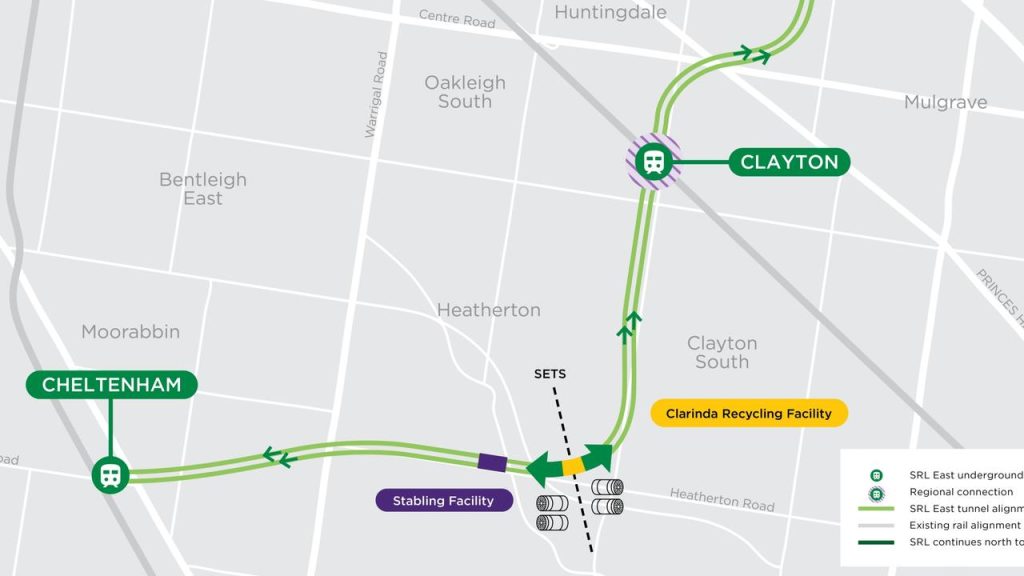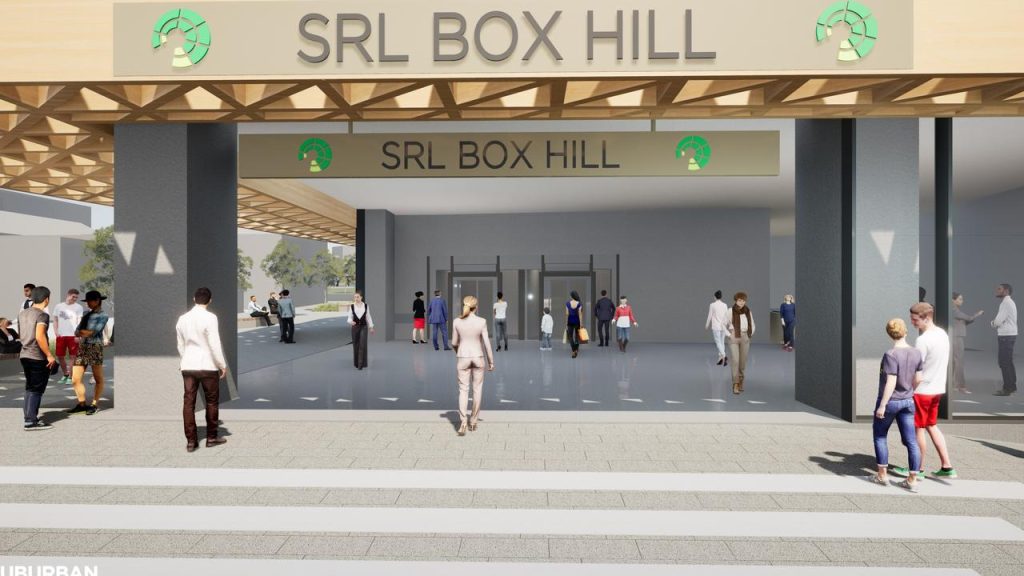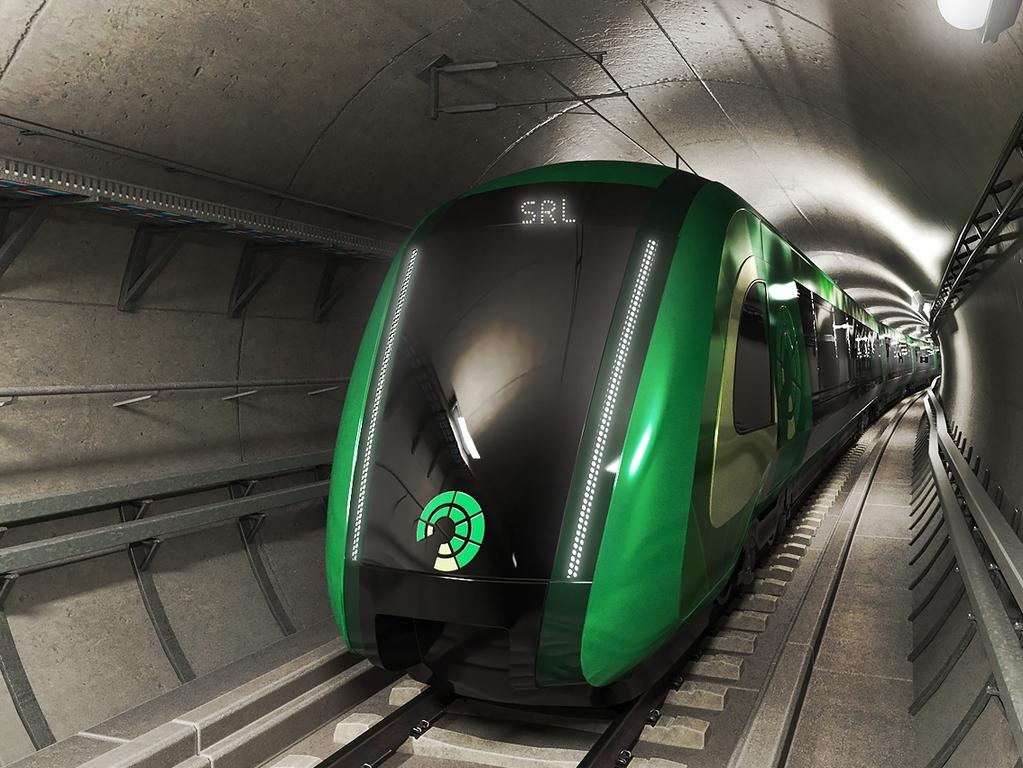Major changes to the $34.5bn Suburban Rail Loop East will reduce construction chaos for almost 100 homes and keep more local roads open.
But the Allan government has promised the project budget and timeline — which is for trains to run between Cheltenham and Box Hill in Melbourne’s southeast by 2035 — won’t be impacted.
The changes include shifting the location where tunnel boring machine are scheduled to launch in 2026 away from a Heatherton stabling facility and suburban homes, to the Alex Fraser recycling site in Clarinda.
Four TBMs would be used instead of six, while construction crews would use “ground freezing” technology from within the tunnel to build safety passages instead of from the surface, reducing road closures.

A map showing where tunnel boring machines will be launched to dig the first 16km of the Suburban Rail Loop East, after changes to the construction plan. Source: Suburban Rail Loop Authority. SRL
On Thursday the government will announce the changes, which Suburban Rail Loop Minister Danny Pearson said was not uncommon for major projects and in this case would “prevent disruptions for nearly 100 homes and businesses, while avoiding 90 per cent of possible road closures”.
“Delivering major projects of this scale requires ongoing consultation with the community and stakeholders – and we will continue to actively look for ways to minimise disruptions as much as we can,” he said.
“This is a great outcome for the communities near Suburban Rail Loop work sites – and I can’t wait to see tunnelling get underway in 2026 so that passengers are travelling through the SRL by 2035.”
A $3.6bn contract to dig the first 16km of the new 26km tunnel, between Cheltenham and Glen Waverley, was inked late last year with a consortium made up of CPB Contractors, Ghella and Acciona Construction.

Concept designs for Suburban Rail Loop stations have been released.
The second tunneling contract, for the remaining 10km between Glen Waverley and Box Hill, is likely to be signed within weeks.
The use of “ground freezing” technology within tunnels has been used on mega projects overseas, and allows for safety passages between tunnels to be built while workers are underground.
This means the need for large-scale machinery at surface level is vastly reduced.
Tunnelling for the project, which is the most expensive ever built in Victoria, is scheduled to start in 2026, which is a state election year.
Herald Sun
